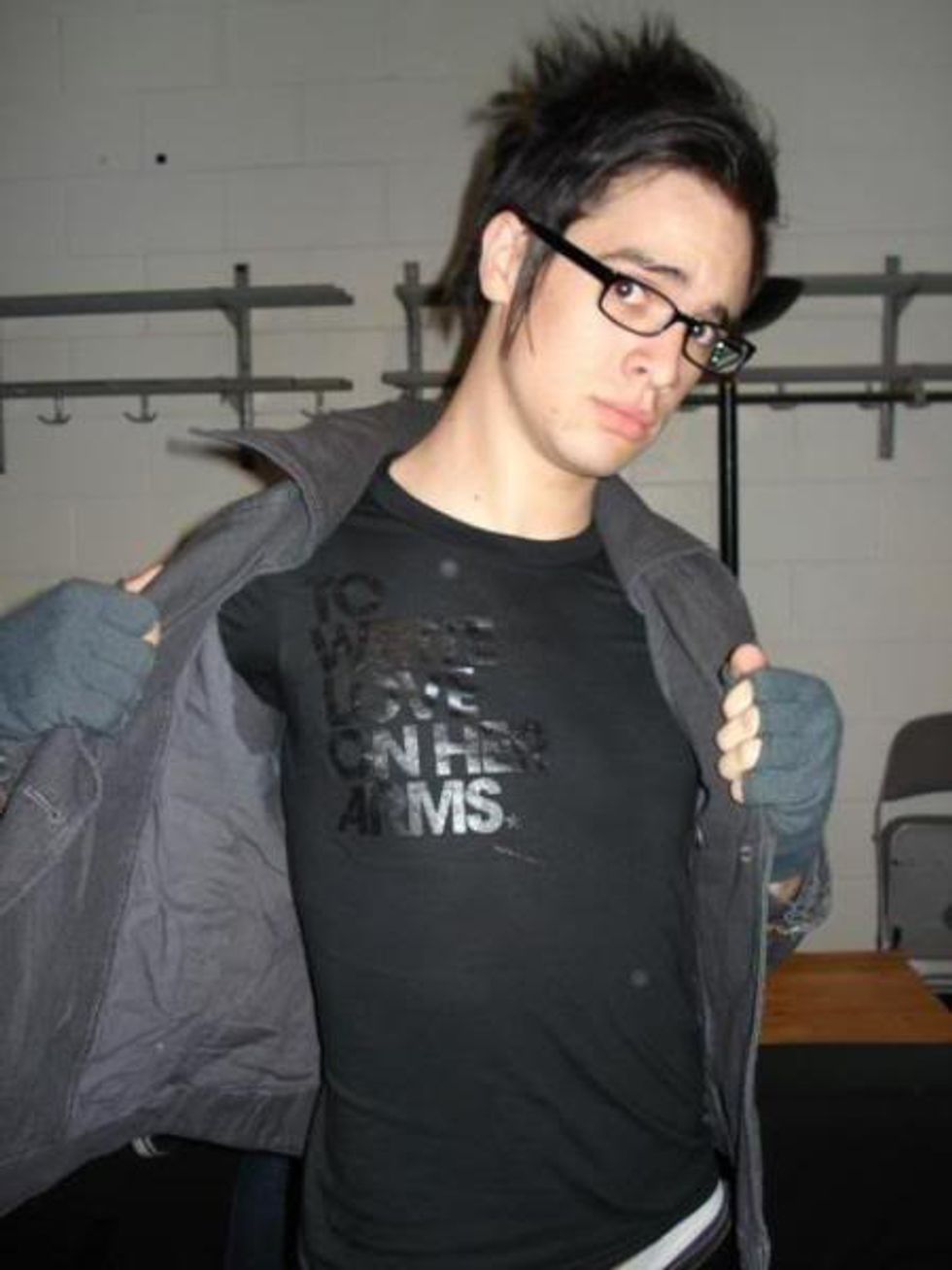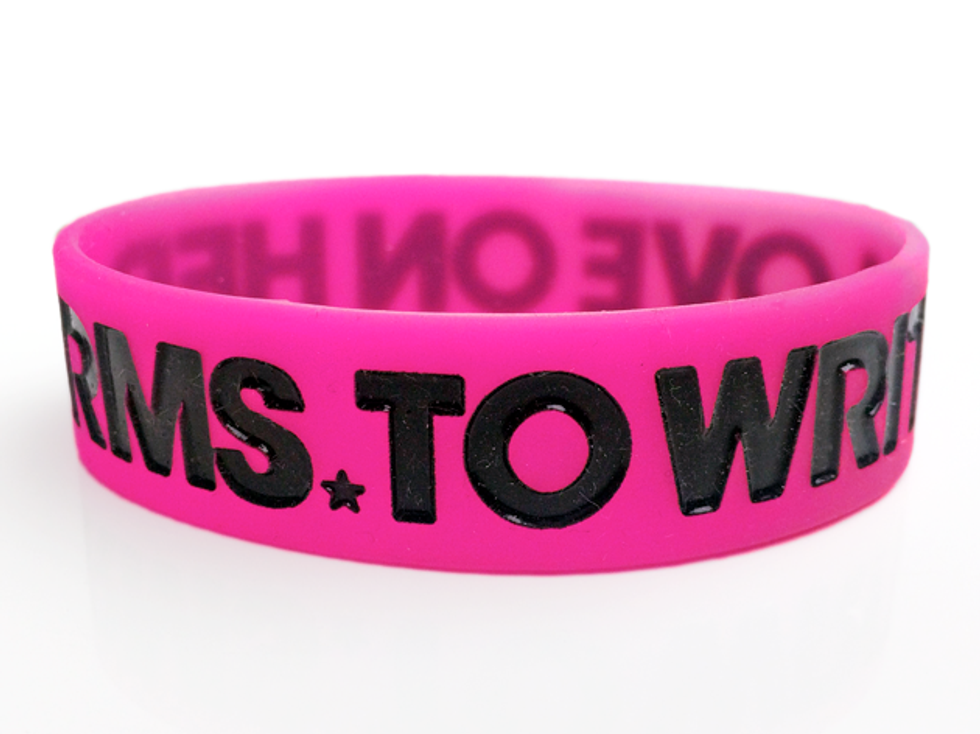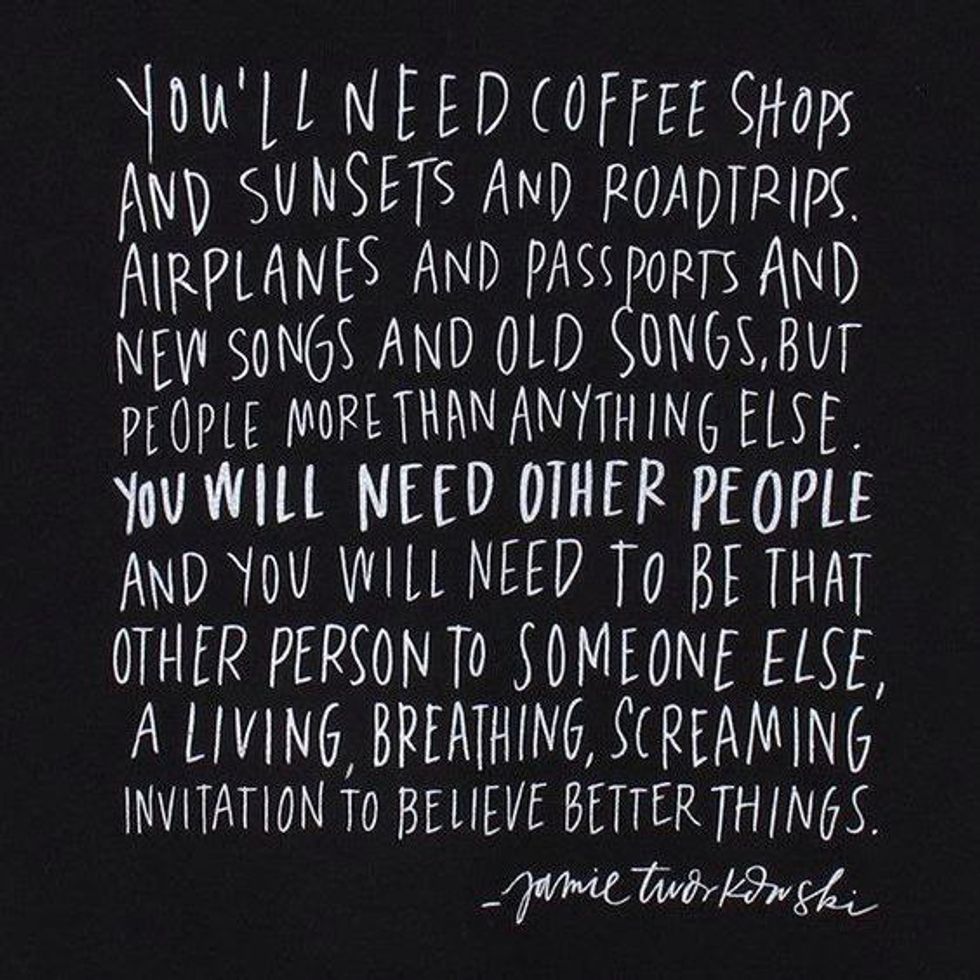(Author's note: The following personal essay deals with issues that some may find triggering. Self-harm is discussed in depth.)
I was 12 years old and lying in bed, staring up at the posters on my ceiling of boys in bands that I loved. One of which was Brendon Urie, the front man of pop-punk band Panic! at the Disco. He was wearing a shirt that read "To Write Love On Her Arms." You can see the exact picture below.
(Courtesy)
I wanted to know what this meant. So I ran to my computer and typed in the words, "To Write Love On Her Arms." I did not know it at the time, but this simple task would completely change my life. That sounds cliche, I know, but hear me out.
According to their website, "TWLOHA is a nonprofit movement dedicated to presenting hope and finding help for people struggling with depression, addiction, self-injury, and suicide. TWLOHA exists to encourage, inform, inspire, and invest directly into treatment and recovery. "
At the time, I was not suffering. Not from the real issues. I had wonderful friends, a wonderful family, school was amazing, and I was happy.
It was less than a year later that I began self-harming.
Self-harming is the act of intentionally inflicting pain upon yourself. Typically self-harmers have an underlying disorder that will cause them to suffer so much, they feel they have no other choice but to hurt themselves. It is one thing that we can control about our lives when we feel as if we have lost control. It is an act that helps us prove to ourselves that we deserve to suffer, or at least we think we do.
I self-harmed for about two years. It occurred during the entirety of my 8th grade year, starting in July 2009, into May 2011, which ended my Freshman year of high school. My preferred methods varied. I had friends in school who had gotten in trouble for cutting their wrists, so I resorted to some not-so-obvious forms of self-harm.
It began with pressing the razor against my leg just a little bit harder than usual when I was shaving my legs in the shower every morning. It developed into pulling my hair to the point of tears, and scratching/digging my nails into my palms hard enough to leave marks.
I was not suicidal. I did not want to die. I had been severely bullied by a girl that I once called my best friend (a few exact quotes from her include: "You should just be a lesbian because no guy would ever want someone like you" and "Do everyone a favor now and just kill yourself".) I felt that I deserved to suffer, so I did. In retrospect, I also had underlying, undiagnosed mental health issues including Generalized Anxiety, Social Anxiety and Panic Disorder. They played a part without me even knowing it.
In late March 2011, TWLOHA came into my life again, in the form of social media. I started following the organization, and its' founder, Jamie Tworkowski, on Facebook and Twitter. I was shopping in the mall one day and decided to buy a neon-pink rubber bracelet that was embossed with the TWLOHA logo. You can find a photo of the exact bracelet below.
(Courtesy)
This was the beginning of my healing process. Playing, twisting and rubbing that bracelet between my fingers offered me a way to keep my anxiety-filled hands busy. If my hands were busy, I could not hurt myself. All the while, the logo reminded me of the hopeful words that Tworkowski would write, I would read, and force myself to remember for when the tense moments would appear.
I don't have that bracelet anymore, and I have not self-harmed in over 5 years, now. I also broke earlier this year, but didn't because of TWLOHA, once again. My university has their own chapter of the TWLOHA organization that strives for the same things the national organization does. My Washburn TWLOHA family helped me keep my strength, and for that, I can not thank them enough.
If you have made it this far into my story, I thank you. I am struggling to find the words to sum this up, so I will leave you with my favorite quote from Tworkowski:
(Courtesy)










 Energetic dance performance under the spotlight.
Energetic dance performance under the spotlight. Taylor Swift in a purple coat, captivating the crowd on stage.
Taylor Swift in a purple coat, captivating the crowd on stage. Taylor Swift shines on stage in a sparkling outfit and boots.
Taylor Swift shines on stage in a sparkling outfit and boots. Taylor Swift and Phoebe Bridgers sharing a joyful duet on stage.
Taylor Swift and Phoebe Bridgers sharing a joyful duet on stage.












